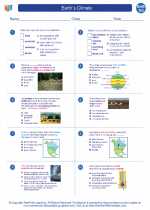Hills: Formation and Characteristics
A hill is a landform that rises above its surroundings and has sloping sides. Hills are formed through various geological processes, including tectonic uplift, volcanic activity, erosion, and deposition.
Formation of Hills
1. Tectonic Uplift: Hills can form as a result of tectonic forces pushing the Earth's crust upward, creating elevated landforms.
2. Volcanic Activity: Volcanic hills, also known as volcanic domes, are formed when magma pushes through the Earth's crust and solidifies, creating a conical or dome-shaped hill.
3. Erosion and Deposition: Hills can also be formed through the gradual accumulation of sediment and debris, as well as the erosion of surrounding areas, leading to the development of elevated landforms.
Characteristics of Hills
1. Sloping Sides: Hills typically have gentle to moderate slopes, making them different from mountains, which have steeper inclines.
2. Vegetation: Hills often support a variety of vegetation due to variations in soil and microclimates. They may also be used for farming and grazing.
3. Geological Diversity: Hills can exhibit a range of geological features, such as exposed rock layers, sedimentary deposits, and soil profiles, providing valuable insights into Earth's history.
Study Guide: Understanding Hills
Key Concepts
- Define a hill and differentiate it from other landforms, such as mountains and plateaus.
- Explain the various processes involved in the formation of hills, including tectonic forces, volcanic activity, erosion, and deposition.
- Discuss the role of geological diversity in understanding the formation and history of hills.
Observation and Analysis
- Visit a nearby hill and observe its geological features, slope characteristics, and vegetation. Take note of any visible signs of erosion or deposition.
- Compare and contrast the vegetation and land use on the slopes of hills with different aspects (i.e., north-facing vs. south-facing slopes).
- Analyze topographic maps or satellite imagery to identify the distribution and arrangement of hills within a particular region.
Connections to Other Topics
- Discuss the relationship between hills and water drainage patterns, including the formation of valleys and river systems.
- Explore the impact of hills on human activities, such as agriculture, urban development, and transportation routes.
- Examine the ecological significance of hills as habitats for diverse plant and animal species.
[Hills] Related Worksheets and Study Guides:
.◂Earth Science Worksheets and Study Guides High School. Earth`s Climate

 Worksheet/Answer key
Worksheet/Answer key
 Worksheet/Answer key
Worksheet/Answer key
 Vocabulary/Answer key
Vocabulary/Answer key
 Vocabulary/Answer key
Vocabulary/Answer key
 Vocabulary/Answer key
Vocabulary/Answer key
